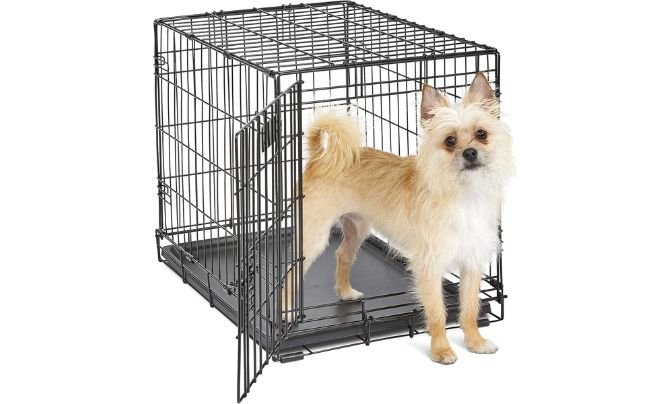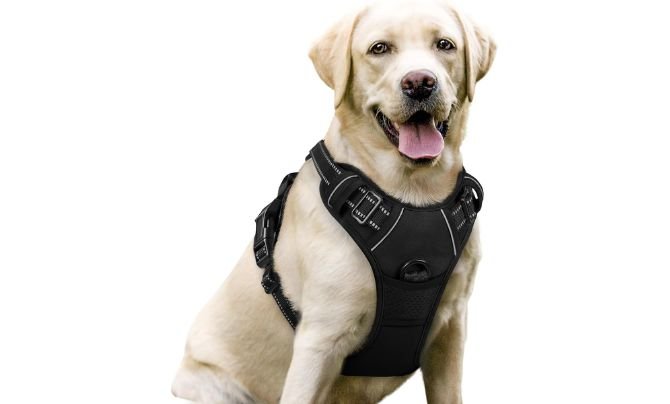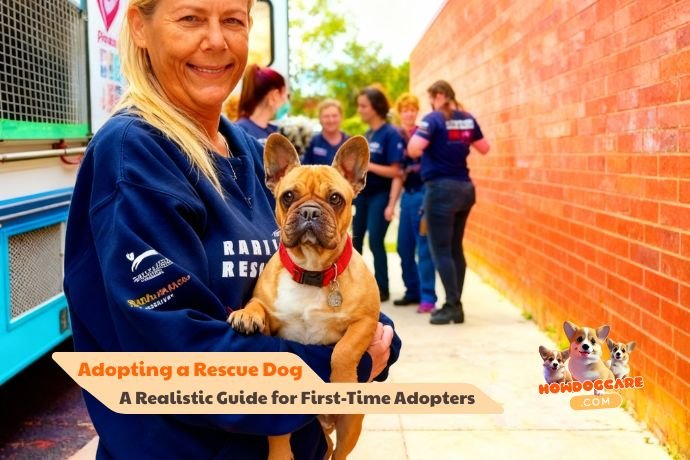Introduction to Adopting a Rescue Dog
Why Rescue Dogs Deserve a Second Chance
When you adopt a rescue dog, you’re not just gaining a pet—you’re saving a life. Millions of dogs enter shelters and rescue organizations every year, often through no fault of their own. Some were abandoned, some surrendered due to financial hardship, and others rescued from neglect or abuse. These dogs are longing for stability, compassion, and a second chance at happiness.
Adopting a rescue dog is a deeply rewarding experience, but it’s also a commitment that requires patience, empathy, and understanding. Rescue dogs may carry emotional scars or have learned behaviors from past experiences. With the right support, they can blossom into loyal, loving companions who are just as trainable—and in many cases, more grateful—than dogs from other sources.
The joy of watching a shy or nervous dog open up, learn to trust, and eventually thrive in a safe and loving home is one of the most powerful bonds you can form with an animal. Rescue dogs may take time, but they always give back in loyalty tenfold.
The Emotional Rewards of Rescue Adoption
Rescue adoption isn’t just good for the dog—it’s life-changing for the human, too. The moment you bring home a rescue dog, you become part of something bigger than yourself. You’re giving an animal hope, safety, and a family—something many of them have never had before.
Many owners describe a unique and profound connection with their rescue dog. These dogs often have remarkable resilience, and watching them slowly let their guard down, begin to play, and finally curl up next to you without fear is incredibly moving.
The journey may be filled with small wins: a tail wag, eye contact, the first time they accept a treat, or finally sleeping soundly through the night. These milestones might seem small to outsiders—but to a rescue dog parent, they’re beautiful reminders that trust is building.
Whether you’re a first-time adopter or a seasoned dog lover, choosing to adopt a rescue is not just kind—it’s courageous, compassionate, and incredibly fulfilling.
What You Should Know Before Bringing a Rescue Dog Home
Assessing Your Lifestyle and Home Environment
Before adopting a rescue dog, take time to reflect on your lifestyle, home situation, and ability to meet a dog’s needs. Rescue dogs aren’t “plug-and-play” pets. They come with backstories, quirks, and emotional baggage that may not always be obvious at first.
Ask yourself:
- Do you have time for daily walks, feeding, and bonding?
- Are you prepared to handle possible training setbacks?
- Do you live in a dog-friendly space (house vs apartment)?
- Are all household members on board?
Each dog has different energy levels, social needs, and behavioral traits. A high-energy dog might not be ideal for a small apartment, while a shy, senior pup might be overwhelmed in a household full of children and other pets.
Many rescue groups are happy to help you assess compatibility and will ask detailed questions to match you with the right dog. Be honest in your application—it helps ensure a successful long-term fit.
Choosing the Right Dog from a Shelter or Rescue Group
The dog you’re drawn to might not be the dog that fits your home best—and that’s okay. When adopting from a rescue or shelter, take your time to get to know the dog’s background, personality, and any special_needs.
Here are some tips:
- Spend time with the dog more than once, if possible.
- Ask about the dog’s behavior in foster or shelter care.
- Inquire about temperament testing, if available.
- Consider the dog’s age, size, and breed tendencies.
Shelter staff or foster parents are often great resources—they’ve spent time with the dog and can offer insights on energy level, training history, socialization, and more.
Some rescue organizations also allow for trial adoptions or “foster-to-adopt” arrangements. This allows you to experience life with the dog in your home before making the adoption official, which is especially helpful for first-time dog owners or families with children.
The First 24 Hours After Adopting a Rescue Dog
Preparing Your Home and Family
Before your new furry friend arrives, take some time to create a safe, quiet, and welcoming space. You don’t need an elaborate setup, but you do need structure and calm to ease your dog’s transition.
Here’s what to have ready:
- A quiet room or corner with a comfy bed and crate
- Food and water bowls (preferably elevated for comfort)
- A few toys (avoid overstimulation)
- Leash, collar, and ID tags
- Cleaning supplies for any accidents
Talk to family members about setting boundaries—limit guests and avoid overwhelming your dog with affection right away. Give them space to sniff, observe, and settle in at their own pace.
Rescue dogs often arrive confused or overstimulated from travel and the change in environment. Let them decompress without pressure. Avoid walks on the first day unless your dog is calm and eager to explore.
Setting Expectations and Creating a Safe Space
The first 24 hours are crucial in establishing a foundation of trust and safety. Don’t expect instant cuddles, playfulness, or eye contact. Your new dog might:
- Hide under furniture
- Refuse food or treats
- Avoid contact or resist walking
- Pant, pace, or whine
All of this is normal behavior for a rescue dog adjusting to a new home. The best thing you can do is remain calm, consistent, and kind.
Create a designated quiet zone (a crate with a cover, a quiet room with a baby gate) where they can retreat and observe without pressure. Stick to low voice tones, slow movements, and simple cues.
Within a day or two, your rescue dog will begin to test boundaries and show signs of curiosity. These are opportunities to begin building a routine and reinforcing trust.
The First Few Weeks: Building Trust and Routine
Creating Structure with Feeding and Walking Schedules
The first few weeks after adoption are all about creating consistency. Dogs, especially those coming from unstable backgrounds, crave routine—it gives them a sense of security and predictability.
Start by establishing a daily schedule that includes:
- Regular mealtimes (2x per day for most adult dogs)
- Consistent potty breaks or walks
- Playtime and quiet time
- Training sessions (even 5–10 minutes goes a long way)
Use the same door to go out, the same feeding location, and even the same words or hand signals for basic commands like “sit,” “stay,” or “potty.” This repetition helps your dog learn what to expect and what’s expected of them.
Feeding your dog at the same time each day also helps with digestive regulation and potty training. Plus, it’s a great opportunity for bonding, especially if your dog is food-motivated.
Consistency during walks builds confidence. Walk the same route for the first week, then slowly introduce new sights, smells, and sounds as your dog becomes more comfortable.
A structured routine tells your rescue dog:
“This is your home now. You’re safe. You can trust this rhythm.”
Managing Fear, Anxiety, and Adjustment Periods
Adopting a rescue dog comes with emotional ups and downs—for both of you. Some dogs adjust quickly, but many go through an “adjustment phase” that can include:
- Excessive barking or whining
- Cowering or hiding
- Reluctance to eat
- Accidents in the house
- Sleep disturbances or restlessness
This is not your dog being “bad”—it’s fear, confusion, and sensory overload. Some dogs have never lived in a home, seen a vacuum cleaner, or walked on hardwood floors. Everything is new.
To help them adjust:
- Minimize loud noises, overstimulation, and chaos
- Stick to a calm, predictable schedule
- Reward desired behavior with praise or treats
- Give them time and space to decompress
Don’t overwhelm them with new people or pets right away. Instead, let them observe at their own pace, and only introduce new experiences once they begin to show confidence or curiosity.
You might also consider calming aids such as:
- Pheromone diffusers (like Adaptil)
- Soft background music (classical or dog-specific playlists)
- Calming treats or supplements (veterinarian-approved)
Remember: the goal is not perfection—it’s progress. Celebrate small victories and don’t be discouraged if things take longer than expected.
Behavioral Issues Common in Rescue Dogs
Separation Anxiety and Stress Signals
Many rescue dogs develop separation anxiety, especially if they’ve experienced abandonment or have been in multiple homes. This can show up as:
- Whining, barking, or howling when left alone
- Chewing furniture, doors, or windows
- Scratching at exits or pacing
To manage separation anxiety:
- Start with short departures and gradually increase time away
- Use positive reinforcement for calm behavior when you return
- Provide a safe space like a crate or cozy bed
- Leave behind familiar smells or a worn t-shirt
Never punish anxious behaviors—they stem from fear, not disobedience. If issues persist, consult a certified trainer or behaviorist who specializes in anxiety.
Dogs also show subtle signs of stress, like yawning, lip licking, avoidance, or shaking off (as if they’re wet). Learning these signals helps you read your dog’s comfort level and prevent overwhelm.
House Training and Crate Training Challenges
Rescue dogs may not have consistent potty training experience—or may regress due to stress. Expect some accidents, even in adult dogs, during the first few weeks.
Tips for successful house training:
- Stick to a routine for potty breaks (first thing in the morning, after meals, before bed)
- Praise and reward immediately after they go outside
- Limit unsupervised indoor access at first
- Clean accidents thoroughly with enzymatic cleaner to remove scent
Crate training can help with housebreaking, anxiety, and safety—but it must be introduced positively. Never use a crate for punishment. Instead:
- Make it cozy with a blanket and favorite toy
- Feed meals inside the crate to create positive association
- Leave the door open when you’re home to allow free access
It may take days or weeks for your rescue to feel fully comfortable with the crate. Be patient, and go at their pace.
Top-Rated Products for Adopting a Rescue Dog
Equipping your home with the right tools can make your rescue dog’s transition smoother. Here are five top-rated products that new adopters swear by:
1. Best Crate for Newly Adopted Dogs – MidWest Homes iCrate

The MidWest iCrate is an affordable, durable wire crate that provides a safe haven for your rescue. It comes with a divider panel, making it suitable for puppies and adults alike.
Pros
- Foldable and travel-friendly
- Removable tray for easy cleaning
- Comes in various sizes for all breeds
- Excellent for crate training beginners
Cons
- Not ideal for heavy chewers
- May require crate cover for nervous dogs
2. Best Calming Aid for Anxious Rescue Dogs – Zesty Paws Calming Bites

These soft chews contain melatonin, L-theanine, and chamomile—perfect for easing anxiety during transitions, crate training, or vet visits.
Pros
- Non-drowsy formula
- Great taste—most dogs love them
- Ideal for daily calming or high-stress events
- Vet-reviewed ingredients
Cons
- Not all dogs respond the same way
- Can be pricey with daily use
3. Best Harness for Safety and Control – Rabbitgoo No-Pull Dog Harness

A good harness is essential when adopting a rescue dog—especially one that’s anxious, strong, or easily distracted. The Rabbitgoo No-Pull Dog Harness offers both comfort and control with a front-clip design that helps discourage pulling on walks.
Pros
- Padded for comfort and chafe-free
- Reflective for night safety
- Four adjustment points for secure fit
- Available in multiple sizes and colors
Cons
- Some dogs need time to adjust to front-clip feel
- Must measure carefully to ensure correct fit
Ideal for dogs new to leash training or who pull during walks, this harness is a favorite among shelter workers and rescue groups.
4. Best Enrichment Toy – KONG Classic Dog Toy

A mentally stimulated dog is a happy dog, and enrichment toys are crucial for rescue dogs adjusting to new environments. The KONG Classic is a time-tested tool for calming anxiety and curbing destructive behavior.
Pros
- Can be filled with treats or frozen food
- Durable and easy to clean
- Great for crate training and alone-time
- Encourages problem-solving and calm chewing
Cons
- Not suitable for extreme chewers (use KONG Extreme)
- Needs supervision with heavy chewers
Perfect for stuffing with peanut butter, wet food, or treats, the KONG keeps dogs busy while reinforcing calm, independent play.
5. Best Bed for Rescue Dogs – Furhaven Orthopedic Dog Bed

Comfort and security are everything when helping your rescue dog settle into their new home. The Furhaven Orthopedic Bed provides supportive cushioning and a cozy bolstered edge for dogs who like to curl up or lean.
Pros
- Orthopedic foam for joint support
- Machine-washable removable cover
- Soft faux-fur lining for comfort
- Ideal for senior or anxious dogs
Cons
- Not chew-resistant—best for calmer dogs
- Sizes run small—check dimensions carefully
Give your new companion a designated sleep space that feels safe, warm, and welcoming—it’s one of the best ways to help them adjust quickly.
Comparison Table of Best Products for Adopting a Rescue Dog
| Product | Best For | Key Features | Price Range | Rating | Review Link |
|---|---|---|---|---|---|
| MidWest iCrate | Crate training & safe space | Foldable, removable tray, multiple sizes | $$ | ⭐⭐⭐⭐⭐ | Review |
| Zesty Paws Calming Bites | Anxiety & transition | Natural ingredients, non-drowsy | $$ | ⭐⭐⭐⭐ | Review |
| Rabbitgoo Harness | Walks & behavior control | Adjustable, reflective, secure fit | $ | ⭐⭐⭐⭐ | Review |
| KONG Classic | Mental stimulation | Durable, stuffable, easy to clean | $ | ⭐⭐⭐⭐ | Review |
| Furhaven Bed | Sleep & comfort | Orthopedic, soft, washable cover | $$ | ⭐⭐⭐⭐ | Review |
These products are highly rated by rescue groups and pet parents, helping ease the adjustment process and build confidence for dogs in their new homes.
Related Articles
- Best Dog Beds of 2026 – 10 Cozy Picks Your Dog Will Absolutely Love
- Top 10 Best Dog First Aid Kits (2026): Trail, Travel & Home
- Top 15 Best Dog Houses Reviews (Updated Guide & Tips)
- Top 10 Best Dog Muzzles Reviews (Updated Guide & Expert Tips)
- Human-Grade Dog Food (2026): Benefits, Costs & Top 10 Brands
Establishing a Veterinary Care Routine
First Vet Visit Checklist
Your first stop after adopting a rescue dog should be the veterinarian’s office. Even if your dog appears healthy, a full checkup ensures they’re up to date on vaccines, free from hidden health conditions, and properly documented.
Here’s a checklist for your initial vet visit:
- Full physical exam
- Heartworm test
- Fecal test (for worms or parasites)
- Rabies, distemper, parvo, and bordetella vaccinations
- Microchip scan and update
- Flea and tick prevention recommendation
- Spay/neuter status confirmation (if not already done)
Bring along any documentation the shelter or rescue group provided, including medical records, previous vaccinations, or spay/neuter certificates.
This visit is also a great time to discuss:
- Nutrition and diet
- Dental care
- Signs of anxiety or stress
- Recommended training or behavior support
If your dog isn’t already microchipped, most vets can do this in-office in minutes. It’s an important step in ensuring your new family member can be found if they ever get lost.
Vaccination and Microchipping Updates
Vaccinations are key to keeping your rescue dog safe, especially if their background or prior care is unknown. Shelters often administer core vaccines, but some may require boosters after adoption.
Typical vaccination schedule:
- Rabies – legally required in most states
- DHPP (Distemper, Hepatitis, Parvovirus, Parainfluenza) – core protection
- Bordetella – especially if your dog will be around other dogs (parks, daycare, groomers)
- Leptospirosis or Lyme disease – based on region and exposure
If your rescue is from a different state or country, ask your vet if additional vaccinations are recommended based on regional disease risks.
Microchipping ensures permanent ID—even if your dog loses a collar or tag. Be sure to register the chip with your contact info after it’s implanted or scanned.
Socialization and Training for Rescue Dogs
Positive Reinforcement vs Correction-Based Training
Many rescue dogs have experienced trauma or inconsistent handling, which makes positive reinforcement the gold standard for training. This method builds trust, confidence, and motivation—without fear.
Here’s how to apply it:
- Reward desired behaviors with treats, praise, or play
- Use short, consistent sessions (5–10 minutes)
- Focus on building one skill at a time
- Never yell, hit, or use harsh corrections (can worsen anxiety)
Tools like clicker training or hand signals can help your dog learn more effectively—especially if they’re timid or distracted. Training helps not only with obedience but also with bonding and communication.
Correction-based methods or dominance theory (e.g., alpha rolling, leash jerking) are outdated and can be damaging to rescues. If you need help, consider working with a certified force-free dog trainer.
Dog Parks, Daycare, and Meeting Other Pets
While socialization is important, it must be introduced carefully with rescue dogs. Many haven’t had positive experiences with other animals—or may have lived in high-stress environments where social cues were missed.
Tips for successful socialization:
- Start with calm, leashed introductions in neutral territory
- Monitor for signs of fear, tension, or overstimulation
- Avoid crowded dog parks early on—too much too fast can overwhelm
- Use treats and praise to reward calm behavior around new dogs or people
- Slowly increase time and exposure as your dog gains confidence
If your rescue is showing fear-based reactivity, barking, or aggression, consult a trainer before exposing them to off-leash environments like dog parks.
Dog daycare can be a great outlet for energy once your dog is fully adjusted, vaccinated, and has shown confidence with new people and animals.
Understanding the 3-3-3 Rule for Rescue Dogs
The 3-3-3 Rule is a simple, helpful way to understand what your rescue dog might experience during their adjustment journey.
3 Days of Decompression
During the first 72 hours, your dog is likely feeling overwhelmed. They may:
- Sleep a lot
- Be hesitant to eat or drink
- Avoid eye contact or physical contact
- Hide or pace
Let them observe at their own pace. Keep things quiet, avoid too much stimulation, and allow them to settle.
3 Weeks of Adjustment
After about three weeks, your rescue starts feeling like they belong. You may see:
- Testing of boundaries
- Increased playfulness
- Curiosity and exploration
- Beginning signs of bonding
This is the time to start establishing rules and routines, begin light training, and encourage more interaction with your household.
3 Months to Become Family
By 3 months, many rescue dogs feel fully at home. You’ll see:
- Deepening trust
- Comfort with daily routines
- Stronger attachment and loyalty
- Fewer signs of fear or stress
They know they’re part of the family. While every dog is different, the 3-3-3 rule helps set realistic expectations for bonding and behavioral change.
Common Mistakes New Rescue Owners Make
Expecting Immediate Bonding
One of the biggest mistakes new dog parents make when adopting a rescue is expecting an instant connection. Unlike puppies raised in loving homes from birth, rescue dogs may carry fear, confusion, or trauma from their past.
While some dogs bond quickly, others need time—sometimes weeks or even months—to trust and show affection. If your new companion doesn’t wag their tail, make eye contact, or follow you around at first, don’t take it personally.
To avoid disappointment:
- Don’t rush cuddles or play
- Let the dog initiate interaction
- Be calm, quiet, and predictable
- Offer treats to build positive association
Bonding happens through routine, safety, and respect—not through pressure. Once they feel secure, most rescue dogs will open their hearts fully. The bond you eventually create will be deep, meaningful, and lasting.
Overwhelming the Dog with New Experiences
It’s natural to want to show off your new furry friend, but overwhelming them with too many new experiences, people, or places early on can backfire. Your dog needs time to decompress and understand their new world before they’re ready for adventures.
Avoid these early mistakes:
- Taking them to the dog park in the first few days
- Hosting guests or playdates too soon
- Bringing them into stores, cafes, or crowded areas
- Bathing or grooming before trust is established
Instead, let your dog settle in quietly, get used to their immediate environment, and begin building a foundation of safety and trust. Once they feel secure at home, they’ll be more equipped to explore the world outside.
When to Seek Help from a Professional Trainer or Behaviorist
Recognizing Signs of Deep Trauma or Aggression
Some rescue dogs come from severely abusive backgrounds and may show signs of serious behavioral issues that require professional support. These signs may include:
- Consistent growling, lunging, or snapping
- Food or resource guarding that escalates
- Fear-based urination
- Excessive pacing, tail-chasing, or compulsive behavior
- Complete withdrawal or unresponsiveness
These aren’t signs of a “bad dog”—they’re symptoms of trauma, fear, or a lack of socialization. Trying to correct these behaviors without proper knowledge can worsen the situation.
If you see these red flags, consult a certified professional dog trainer (CPDT-KA) or veterinary behaviorist. Look for trainers who use positive reinforcement and force-free methods.
Professional support can help your dog heal—and give you the tools to work with them safely and successfully.
Finding Certified Dog Behaviorists Near You
When searching for help, be sure to look for credentials and methods that align with ethical training. Avoid anyone who uses punishment-based tactics or promises “quick fixes.”
Trusted directories include:
Ask questions before hiring:
- What methods do you use?
- Do you have experience with rescue or trauma dogs?
- Can I be present during training sessions?
- Do you provide written behavior plans?
The right trainer will empower you—not intimidate you—and create a plan that prioritizes your dog’s emotional well-being.
Celebrating Milestones in Rescue Dog Progress
Tracking Behavioral Improvements
Every little breakthrough matters when adopting a rescue dog. Keep a log of progress, including:
- The first tail wag
- Accepting treats from your hand
- Sitting on command
- Going outside without hesitation
- Greeting new people calmly
These moments show your dog is building trust and confidence, and recognizing these milestones will keep you motivated during tough days.
Use photos, journal entries, or even social media posts to track progress and celebrate every win—big or small. It helps you reflect on how far your dog has come.
Building an Unbreakable Human-Dog Bond
The bond you build with a rescue dog isn’t rushed—it’s earned. Over time, you’ll learn each other’s habits, quirks, and preferences. Your dog will start to anticipate your voice, mirror your emotions, and truly become your companion.
Strengthen that bond by:
- Spending quality time every day
- Going on nature walks, car rides, or quiet cuddles
- Practicing simple training sessions
- Being consistent with care and routines
- Respecting their boundaries and body language
What starts as a quiet companion may soon turn into a joyful, loyal shadow. That moment your rescue finally falls asleep with their head in your lap, tail gently wagging—you’ll know the journey was worth it.
Conclusion
Adopting a rescue dog is one of the most compassionate, life-affirming decisions you can make. While the road may be paved with uncertainty at first, the destination is incredible growth, healing, and love—for both you and your dog.
You won’t just be giving them a second chance. You’ll be changing both of your lives forever.
Expect challenges, but trust in the process. With time, consistency, and kindness, your rescue dog will become not just a pet—but a family member, a best friend, and a symbol of unconditional love.
FAQs About Adopting a Rescue Dog
How long does it take for a rescue dog to adjust?
Most rescue dogs follow the 3-3-3 rule: 3 days of decompression, 3 weeks of adjustment, and 3 months to feel fully at home. However, every dog is different—some may take longer, especially if they’ve experienced trauma.
Are rescue dogs harder to train than puppies?
Not necessarily. While some rescue dogs have behavior challenges, many are quick learners. Adult dogs often have longer attention spans and respond well to consistent, reward-based training.
What should I buy before bringing a rescue dog home?
Essentials include: food and water bowls, a comfortable bed, crate, leash and harness, ID tags, calming aids, toys, and treats. Having a quiet space ready helps ease the transition.
Can a rescue dog bond with me after trauma?
Yes. Many rescue dogs who have experienced trauma eventually form deep, trusting bonds with patient, loving owners. It may take time, but the bond is often stronger because of the journey.
Is crate training necessary for rescue dogs?
Crate training isn’t mandatory but can be highly beneficial. It gives rescue dogs a safe, enclosed space to decompress, builds routine, and aids with house training when done properly.






